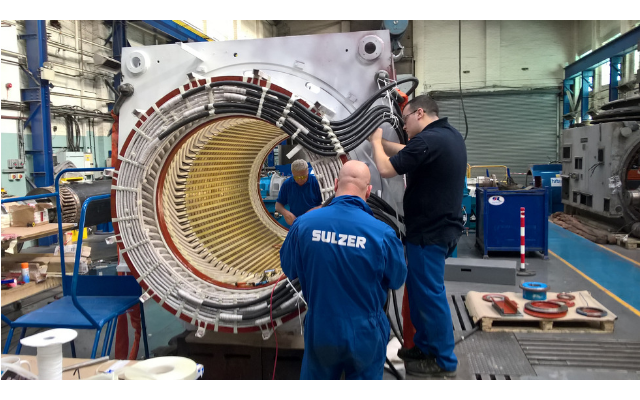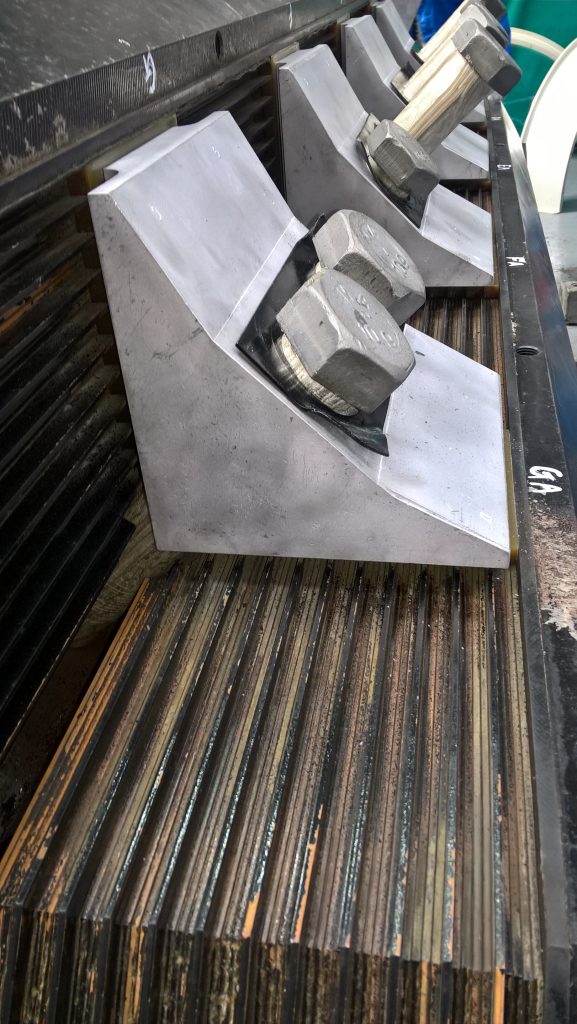Contributor: Sulzer
Waste–to-energy plants perform a key role in reducing the amount of waste that goes to landfill and are critical in the generation of power for the local grid. However, when a generator fails it is essential that repairs are completed quickly to get the plant back online. Sulzer was contracted to rewind a damaged generator and managed to return it to operation within just 30 days, minimizing the costs associated with lost production.
For a mid-sized plant, processing over 200,000 tonnes of waste per year, keeping downtime to a minimum is essential to maintain efficiency. Operating a comprehensive, preventative maintenance program is crucial to operating a cost-effective plant. However, unforeseen maintenance issues will occur; in these situations, it is the speed of response and the quality of the repair that will determine the success of the repair project.
A waste-to-energy plant owner in the UK experienced an unexpected failure of the site’s sole generator, which meant that the heat generated by the incinerator could no longer produce energy. Keen to resolve the issue quickly, the maintenance manager called in Sulzer engineers, who arrived within two hours, to carry out an initial inspection to determine the cause of the failure.
The results showed that the stator had suffered from a coil shorting to earth on the turbine side of the winding, as well as suspected damage to the stator core. The plant operator had to move fast. The order was given to remove the generator from the site for further investigation of the core and rotor which were not accessible without a full dismantle.
Comprehensive investigations
The generator is central to the entire business, both financially and physically. The first task was to disconnect all of the ancillary equipment and remove a section of the building’s roof to allow a 400-tonne crane to lift the generator from its operating plinth onto a set of skates. This enabled its removal from the building and loading onto transport for immediate delivery to the local Sulzer Service Center in Birmingham.
With time such a critical factor in this project, the generator was dismantled overnight to allow the rotor, stator and coils to be tested. Apart from the need to rewind the stator, the tests also showed that the rotor required further investigation as the insulation resistance tests did not meet the acceptance criteria of 100 MΩ.
Designing and manufacturing new stator coils is a complex task, one that the engineers at Sulzer have perfected over many years. Using the latest class F insulation materials allows for thinner layers that can withstand greater dielectric stress, higher temperatures and also creating more space for copper within the same slot area. This reduces the resistance of the stator winding, which runs cooler, allowing a small increase in output.
Meeting the tightest deadline
By using the latest CAD software, the new coils were precisely formed to ensure an exact fit in the stator slot, making the installation process more efficient. The new coils were manufactured in Sulzer’s coil winding shop in Birmingham, UK, which uses its in-house copper rolling mill to enable round-the-clock coil production to meet even the tightest deadline.
Once the stator had been stripped of the old coils, the stator core inspection revealed a damaged tooth that would need to be repaired before the new coils could be installed. The damaged slot section was machined out to allow the installation of an epoxy glass block G11, which was machined to restore the stator slot profile to the correct dimensions.
Keith Barbier, Head of International Contracts and Projects at Sulzer UK, comments: “The re-build process is a very skilled and time consuming task because precision is essential to achieving a high quality finish. The engineers worked round the clock to manufacture the new coils and install them into the stator.”
Prior to the rebuild, the coils were stress tested to earth in accordance with EN60034-1, tan delta tested and interturn tested using EA Technical Specification 44-5 as the pass mark. At the same time, the rotor was refurbished and then reassembled with the completed stator before the final tests were completed.
After just 30 days the generator was back on site, being craned into position and reinstalled with all the ancillary equipment, before being put back into service.
Projects such as this have highlighted Sulzer as a leading provider of engineering solutions to the power generation sector, from on-going condition monitoring to complete turnkey projects. With a global network of repair centers capable of completing generator and turbine repairs, Sulzer ensures it employs experienced engineers, equipped to complete projects on site if necessary.





